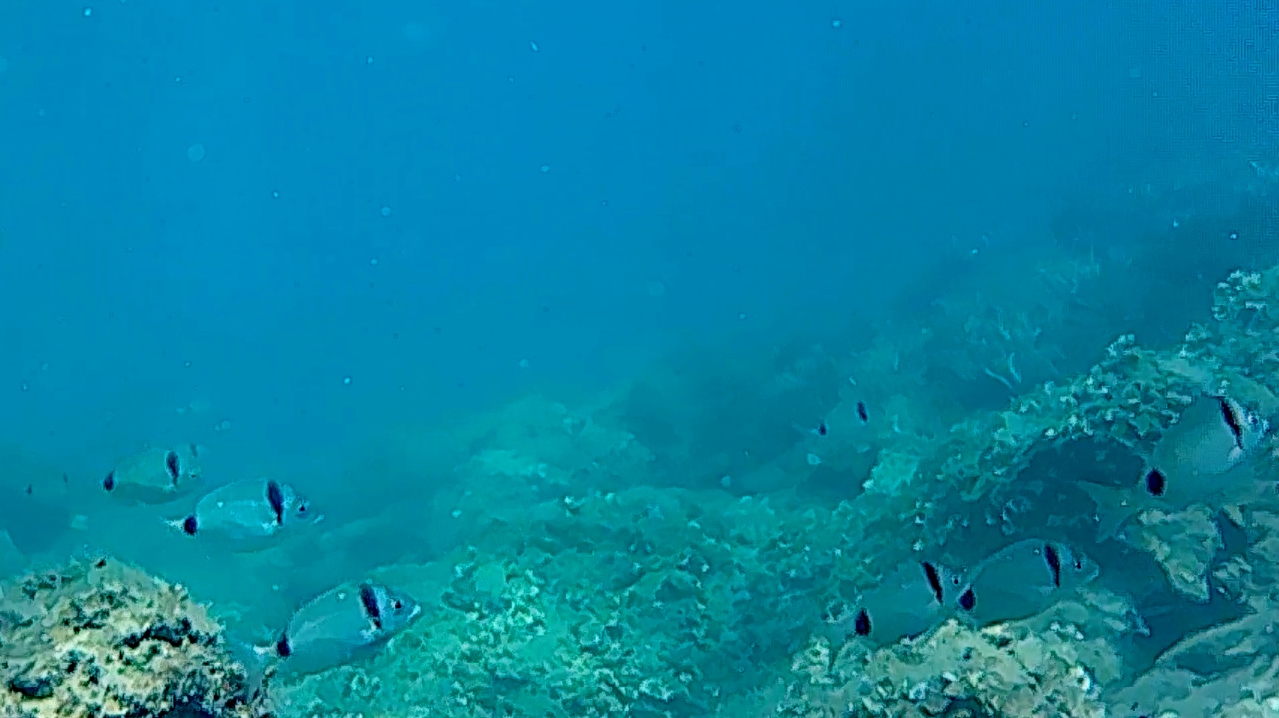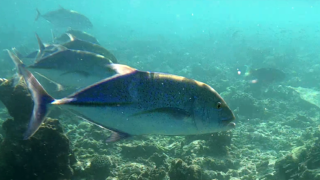Sarago fasciato Diplodus vulgaris
Diplodus vulgaris belongs to the class Osteichthyes, subclass Actinopterygii, order Peciformes, suborder Pecoidei, family Sparidae.
Oval-shaped, like all the sparidae, it generally has a size around 20-25 cm in adulthood. The mouth is very small. Predominantly carnivorous feeds on small crustaceans and worms.
Diplodus vulgaris is easily distinguished from the other sparidae for the two dark spots in the shape of a saddle, one in the anterior part between the dorsal fin and the eye, the other in the caudal area, the back is gray mind the hips and the belly have a silvery color.
It is common throughout the Mediterranean Sea and the eastern Atlantic Ocean to Senegal. It prefers the shallows characterized by rocky areas where it easily finds shelter inside the burrows. It is a fish that loves social life and in fact we find it in herds both among its own similar and with other fish of different species. Sarago fasciato Diplodus vulgaris
Many serranid species are brightly colored, and many of the larger species are caught commercially for food. They are usually found over reefs, in tropical to subtropical waters along the coasts. Serranids are generally robust in form, with large mouths and small spines on the gill coverings. They typically have several rows of sharp teeth, usually with a pair of particularly large,canine-like teeth projecting from the lower jaw.
All serranids are carnivorous. Although some species, especially in the Anthiadinae subfamily, only feed on zooplankton, the majority feed on fish and crustaceans. They are typically ambush predators, hiding in cover on the reef and darting out to grab passing prey. Their bright colours are most likely a form of disruptive camouflage, similar to the stripes of a tiger.
Many species are protogynous hermaphrodites, meaning they start out as females and change sex to male later in life. They produce large quantities of eggs and their larvae are planktonic, generally at the mercy of ocean currents until they are ready to settle into adult populations.
Typically groupers live in their lair, where they feel safe, and go out to get food and check the territory.
(extract from Wikipedia)
 English
English Italiano
Italiano





